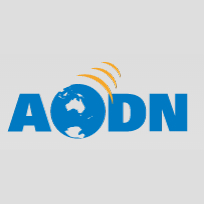Brief description
This record describes the conductivity-temperature-depth (CTD) data and underway water sample data collected during the CSIRO Investigator transit voyage INVTO1_2024, between 9 March and 20 March 2024. The objective of the voyage was for a safe transit from Fremantle, Western Australia, to Hobart, Tasmania. This record was part of a piggyback project whereby undergraduate students attained at-sea training through the Institute of Marine and Antarctic Studies and the University of Tasmania. The project aim was for students to gain experience with oceanographic data collection, processing and analysis. The CTD data includes 7 CTD profiles that measured conductivity, temperature, pressure, dissolved oxygen, salinity, fluorescence, turbidity and photosynthetically active radiation (PAR). Each of these parameters were collected during each CTD profile. The CTD data also includes calculated measurements of ammonium, nitrate, nitrite, phosphate, silicate, as well as chlorophyll-a, from select rosette bottles. The underway water sample data includes 41 duplicate samples of calculated measurements of chlorophyll-a and associated calculated measurements of ammonium, nitrate, nitrite, phosphate and silicate nutrient concentrations. In both data files, ODV quality flags have been used to indicate data quality.Lineage
Maintenance and Update Frequency: notPlannedNotes
CreditThis research was supported by a grant of sea time on RV Investigator from the CSIRO Marine National Facility (https://ror.org/01mae9353).
This research was also supported by the Institute for Marine and Antarctic Studies through the University of Tasmania.
KSA224/324 Oceanographic Methods class 2024 (IMAS)
Issued: 27 05 2025
Data time period: 2024-03-09 to 2024-03-20
text: westlimit=113.247833; southlimit=-45.282711; eastlimit=150.18995; northlimit=-31.4512
text: westlimit=115.10446; southlimit=-32.3751; eastlimit=115.10446; northlimit=-32.3751
text: westlimit=115.28843; southlimit=-34.846334; eastlimit=115.28843; northlimit=-34.846334
text: westlimit=117.820359; southlimit=-35.461561; eastlimit=117.820359; northlimit=-35.461561
text: westlimit=122.739431; southlimit=-37.407456; eastlimit=122.739431; northlimit=-37.407456
text: westlimit=125.59166; southlimit=-38.14252; eastlimit=125.59166; northlimit=-38.14252
text: westlimit=126.97376; southlimit=-38.9309; eastlimit=126.97376; northlimit=-38.9309
text: westlimit=135.49422; southlimit=-41.79428; eastlimit=135.49422; northlimit=-41.79428
text: uplimit=6021; downlimit=15
User Contributed Tags
Login to tag this record with meaningful keywords to make it easier to discover
(Methods for reproducible shipboard SFA nutrient measurement using RMNS and automated data processing)
doi :
https://doi.org/10.1002/lom3.10294![]()
(DATA DOWNLOAD - Raw CTD Data (CSV 5.3MB))
uri :
https://data.imas.utas.edu.au/attachments/df4cd452-6ad9-4784-b0a5-809f03ef94ba/INVT01_2024_CTD.csv![]()
(DATA DOWNLOAD - Finalised CTD Data (CSV 8.8KB))
- global : df4cd452-6ad9-4784-b0a5-809f03ef94ba


